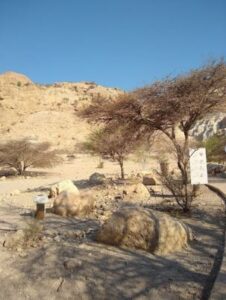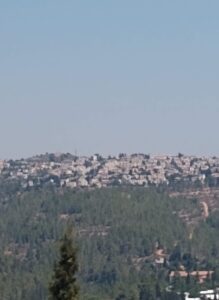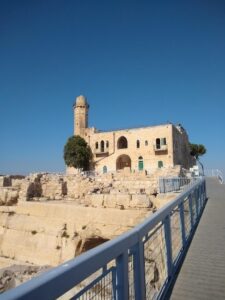
A View from the Wilderness
My déjà vu always wakes up with the change of seasons—especially in the Fall. I know it’s not Fall yet; but if feels that way once the children are in school and normal family routines have resumed. It has even been almost cool a few mornings in the past week. Soon we’ll be looking forward to some more outdoor time in pleasant weather, along with Fall colors and flavors.
The déjà vu has been somewhat unwelcome this year, however, and that’s because it has revealed the blatant truth that meets us every day as we step outdoors; the world is not as it should be. After a brief reprieve this Summer, it feels like things should be different. We shouldn’t be worried about masks or vaccines or variants anymore. Masks should not be on the litany of things we have to remember as we head out the door on the way to school in the morning. (Don’t get me wrong. I’m thrilled that our kids are wearing them now.)

It’s the same at church, too. We shouldn’t still be worried about the livestream or reconnecting with people, or getting Sunday school again. We just shouldn’t. In an ideal world, we’d be well underway, enjoying the company of friends, learning some new things, delighting in the faithfulness of a God who has led us to the other side of it all. That we’re walking the same ground we were last year makes it feel somehow worse.
We probably know by now that faith never has a straight line trajectory. The result of this is that we grow through seasons of struggle and difficulty as much as we do through the good times. That’s why scripture is full of the tension between expectation and fulfillment, barrenness and fertility, wilderness and Promised Land.
Figure 1: The Judean Wilderness, mostly barren. This is the lush part.
Let me give you two examples. Our Bible Study opened the Gospel of Luke this week, and we began by looking backwards to First Samuel. At the beginning of both books we meet older couples who are childless, waiting, and faithful (Hannah and Elkanah in First Samuel, Zechariah and Elizabeth in Luke). When God intervenes, both couples bring prophets to announce the coming of Israel’s King: Samuel, who anoints King David, and John the Baptist, who anoints Jesus. We even get remarkable songs of praise from two heroines in the different stories: Hannah, the mother of Samuel, and Mary.
 To underscore the connection between the two stories, it helps to know that you can actually see the location of the two scenes one from the other.
To underscore the connection between the two stories, it helps to know that you can actually see the location of the two scenes one from the other.
Samuel lived in Ramah, not too far from Jerusalem, and the traditional sight of his tomb is nearby. In Luke chapter one, when Mary comes to visit her cousin Elizabeth (and when they were pregnant with Jesus and John respectively), they were thought to do so at a place called Ein Karem, which is in view of Samuel’s tomb from some miles away.
Maybe it was an accident of history that brought the two sites within sight of each other. Or maybe it was a little bit of God’s mischief, reminding us from our own story of faith that fruitfulness often comes from seasons barrenness. We can see it with our own eyes.
Figure 2 A view of Samuel’s Tomb from Ein Karem. See if you can spot it on the hill! Apologies that it’s blurry, I am a poor photographer and I was on the run.
It might be hard, then, to go through another season like this, expecting something different: remembering the consolations of the past and living in the disappointment of the present. To that I can only say that all of these things—grief and joy, disappointment and hope, barrenness and abundance, wilderness and promised land—live in sight of each other. Karl Barth put it, “Just as there can be no Easter without a cross, there can be no cross without Easter.”
Figure 3 Samuel’s Tomb. Has been a Crusader church, a mosque, and is now a synagogue. Near Ramah.
If you’d like to know more, join us Monday mornings at 10:00 a.m. at the church for Bible Study.
Or, join a group on Wednesday, September 1 at 8:00 p.m. via zoom to hear a report on Will’s Holy Land trip, and how it can deepen your faith and knowledge of God’s story.

